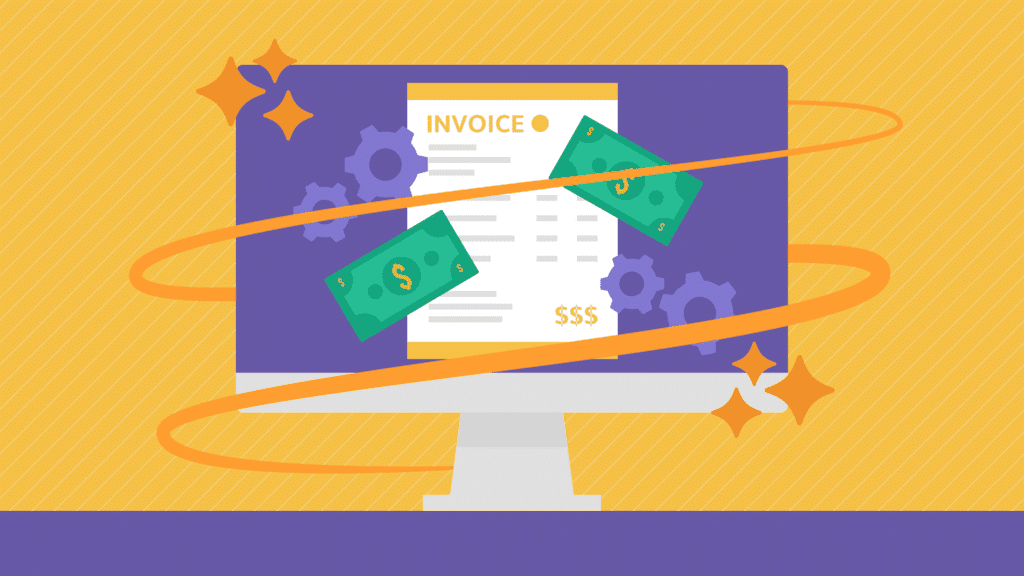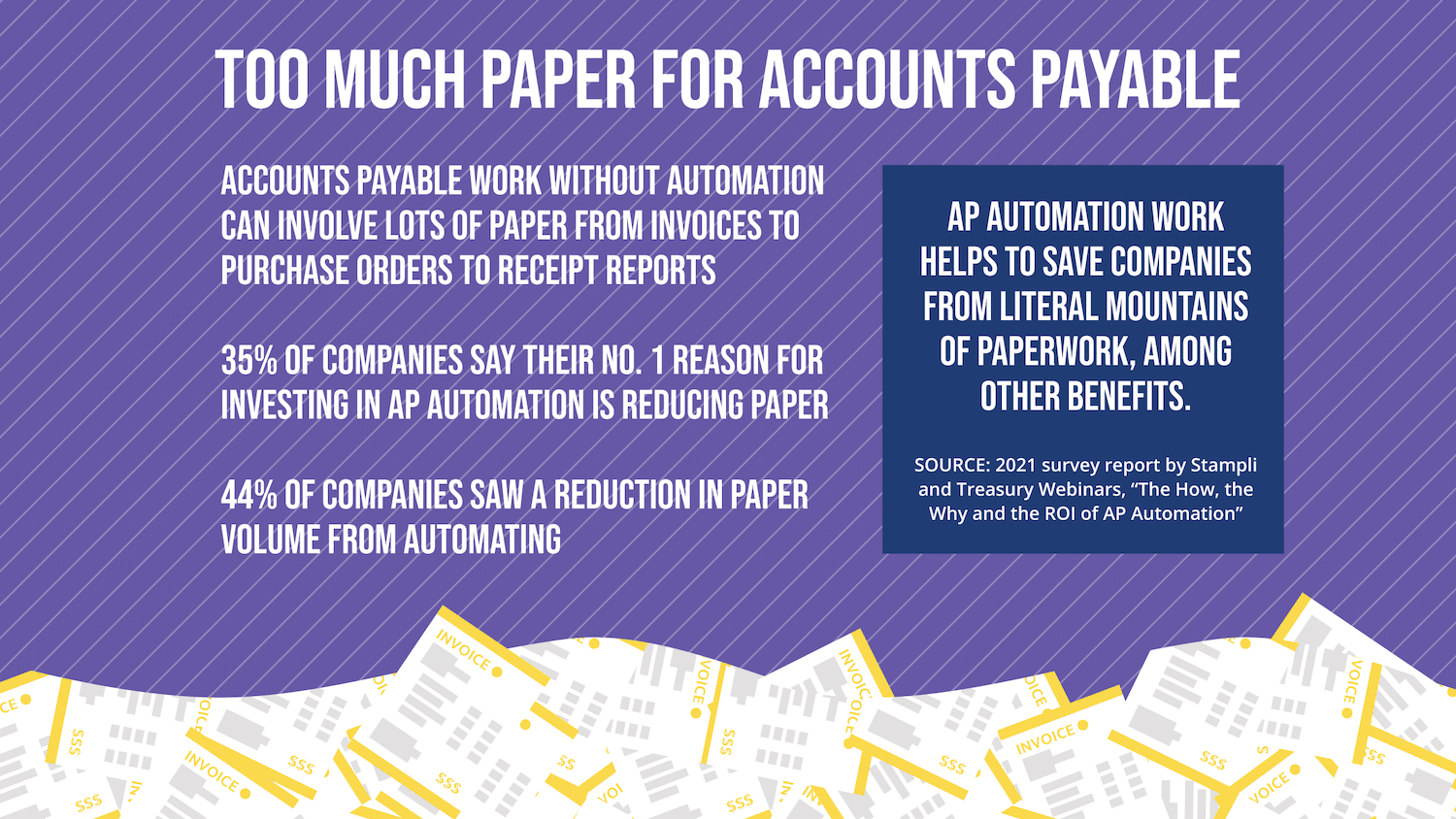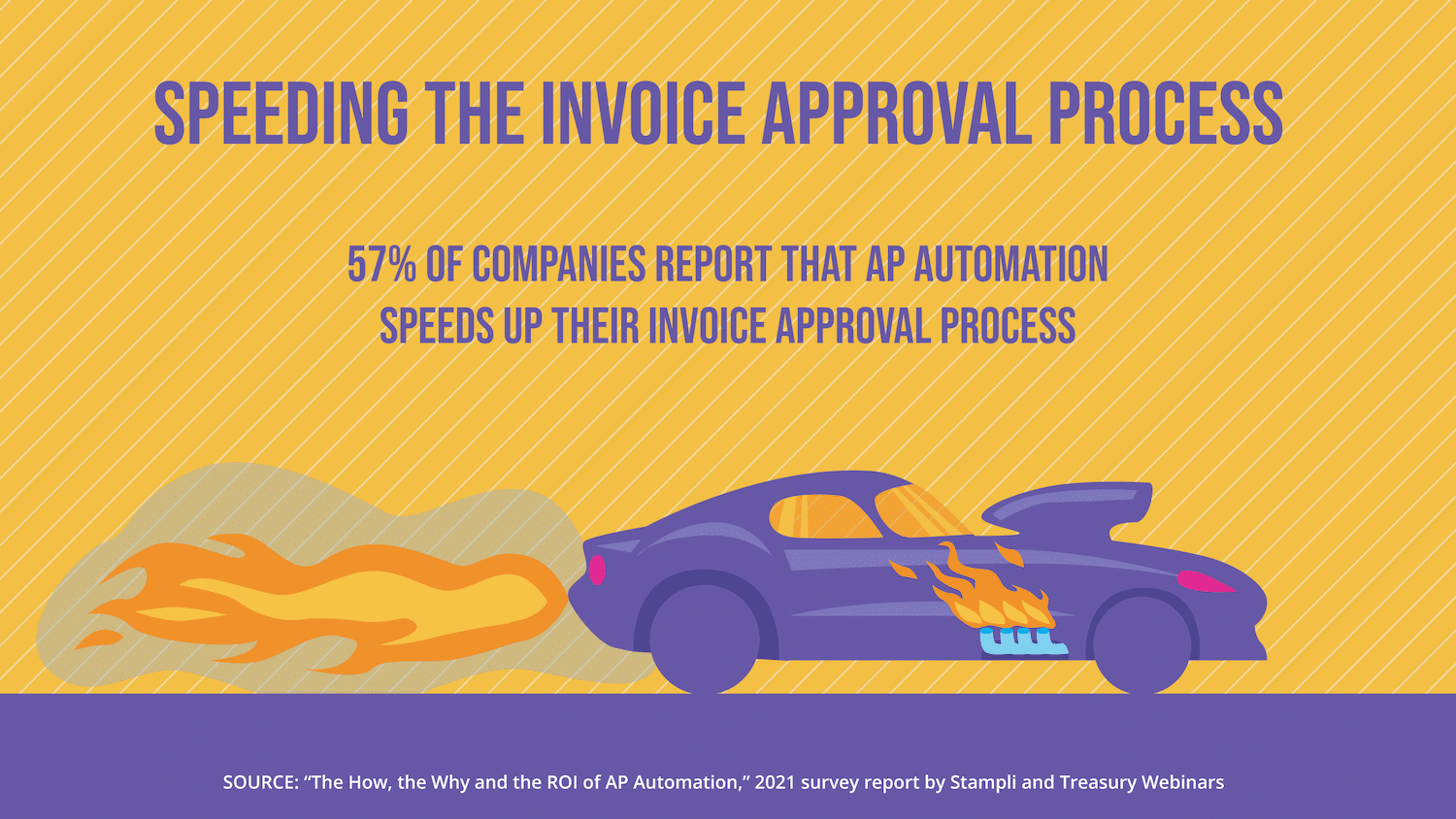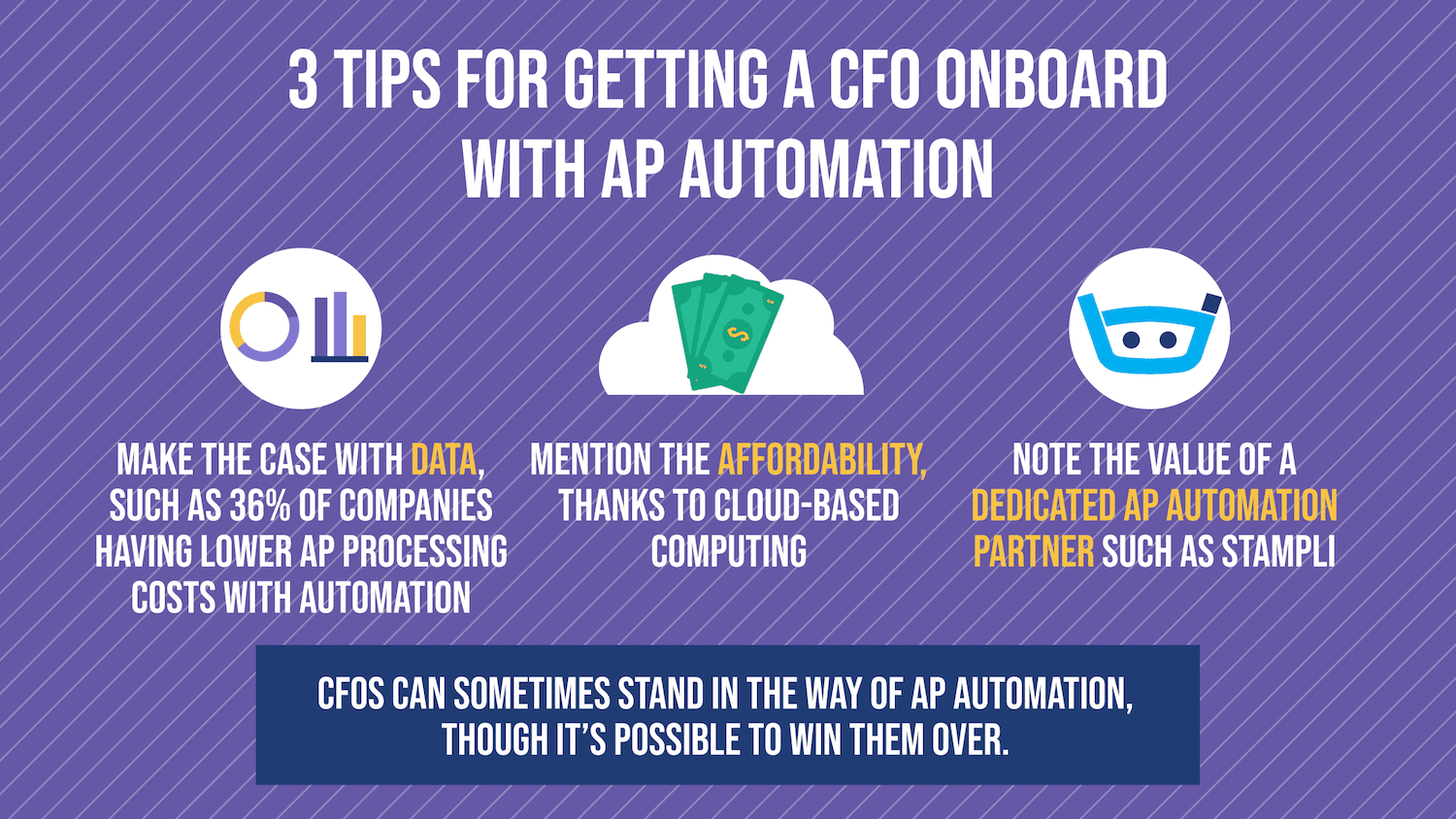How to Revamp Your Invoice to Pay Process with AP Automation

When an invoice arrives – or sometimes, when it doesn’t – that’s when the problems can start for a company with an outdated invoice to pay process. This can also be known as the procure-to-pay process and involves everything from the point of procurement to payment, with many different steps. Suffice to say, there are a lot of potential problems.
A study by AP Now and Stampli, “Common Invoice Problems: How to Deal With Them” cataloged the different invoice problems companies can experience. These include:
- Slow invoice approval processes for 72% of respondents
- Invoices lacking a purchase order or requisitioner’s name for 71%
- Invoices sent to the wrong place or person for 65%.
And those are just a few of the issues reported.
The thing is, a company doesn’t have to stay stuck forever in an inefficient and costly invoice to pay process. These days, it’s easier than ever for companies to supercharge their accounting. Join us as we explore how the invoice to pay process has traditionally functioned, reasons to ditch manual workflows, and how to convince higher-ups such as CFOs to get onboard with AP automation.
How the Invoice to Pay Process Has Traditionally Worked

For as long as businesses have existed, they’ve had to pay their vendors. And, until recent decades, this happened through a largely paper-based process. Even now, many companies are still not enjoying as efficient of an invoice to pay process as they probably could.
Here are three hallmarks of the traditional, analog way of an invoice to pay process.
Paper and Lots of It
The No. 1 reason for investing in accounts payable automation, according to a 2021 survey report by Stampli and Treasury Webinars, “The How, the Why and the ROI of AP Automation”, was that current processes have excessive amounts of paper, according to 35% of respondents. Unfortunately, a lot of the documentation still comes through manually, with PYMNTS noting in July 2020 that 75% of invoices reached U.S. finance departments in paper form.
Certainly, a lot of paper can accumulate during the invoice to pay process. Far from just being about paying a bill when it comes through accounting, the invoice to pay process is a complex series of tasks from procurement to payment. Here are some of the tasks:
- Entering each transaction into general ledger
- Matching invoices to purchase orders and receipt reports to prove the validity of transactions
- Trading emails with internal higher-ups while chasing payment approvals and troubleshooting problems as they arise
Try to do all of this without cloud-based accounts payable automation software and a company might need a literal airplane hangar for the mountain of paperwork that can accumulate in processing hundreds, if not thousands of invoices per month. It will also keep more workers having to work out of offices, which can be a problem in the age of COVID-19.
A Clunky, Inefficient Invoice to Pay Process
The average company with over 500 employees needs 15.6 days past the due date of each invoice to pay vendor, with The Guardian noting in March 2021 that this was “up from just under 10 days a year earlier. But this isn’t just pandemic-related.” Indeed. Companies experience numerous invoice issues regularly, with Stampli and AP Now’s 2019 study noting such issues as:
- Manual data entry being required, for 50% of respondents;
- Duplicate invoice submission, for 50%;
- Other info missing from invoices, for 40%;
- Missing early payment discounts, for 23%;
- Second invoices with different invoice numbers, for 21%.
In addition, without automation, accounts payable departments will have to manually enter each invoice into the general ledger, perform three-way document matching by hand, and reach out (by hand-delivery, email, or other method) for payment approvals. Three-way document matching refers to matching invoices to purchase orders and receipt reports.
It’s a cumbersome, outdated process, and it’s no surprise companies wind up past the due date for invoices. In fact, 33% of companies in Stampli and Treasury Webinars’ 2021 report on AP automation cited workflow bottlenecks as a reason for investing in AP automation.
All of these issues can lead to a variety of problems, from late payments to penalties and associated cash flow challenges. Supplier invoices might also have more rigid payment terms in the future and be less flexible with outstanding invoices.
Upper Management: Traditional Roadblocks to Automation
Stampli and Treasury Webinars’ 2021 automation report also noted that CFOs make the decision on AP automation more than any other, comprising 25% of decision makers. This is especially true the larger a company gets, with CFOs the decision makers for approximately 20% of small companies, roughly 25% of mid-market firms, and around 30% of enterprise-level companies.
Accordingly, CFOs can be some of the major roadblocks to AP automation. The same report noted that lack of executive buy-in or support had prevented 11% of companies from investing in AP automation. The most popular response for not automating AP – the 44% of companies who believed their current processes worked sufficiently well – also suggested that upper management might not be properly assessing the need for AP automation.
Getting the CFO to see the value of getting beyond manual accounting processes is sometimes no easy feat. But, as we’ll explore in a bit, there are ways to get them onboard.
Benefits of Ditching Manual Invoice to Pay Processes

As noted earlier, the largest driver for AP automation is the hope for businesses that it will reduce paper volume. This isn’t just about preference, with a real-world cost for processing paper invoices of as much as $150 billion annually. Happily, one of the chief benefits for companies in Stampli and Treasury Webinars’ 2021 survey on AP automation was a reduction in paper invoice volume, experienced by 44% of respondents.
This is just one reason to ditch manual invoice to pay practices in favor of AP automation. So let’s look at some more reasons to do it, as well as how to go about it.
Better Remote Capabilities
Reduced paper volume doesn’t just benefit the environment or save a company a lot of money on paper expenses. It also helps with the shift necessitated by the COVID-19 pandemic of having more AP work done remotely.
“Firms with remote employees have to improvise to keep their payments operations running smoothly,” PYMNTS noted in December 2020. “This has often entailed doing away with paper-based payments in favor of cloud-enabled AP and AR solutions that professionals can access from their laptops, computers, mobile devices and tablets to process expenses online.”
AP automation reaches employees wherever they’re at — literally — and on whatever system they’re using. Systems like Stampli prioritize communication, with tools for this embedded in each digital invoice, helping avoid the kind of breakdowns that can delay open invoices. Remote invoice payments can be arranged, be it with the ACH or checks. Invoicing software can also help prepare for credit card payments, bank and wire transfers, and more.
It’s all part of a smarter and better invoice to pay process that reflects the current state of the world rather than arcane payable processes that were allowed to persist far too long.
More Efficient Workflows, Which Helps Upper Management
An automated accounting workflow is a beautiful thing, with artificial intelligence able to intuitively route invoices wherever they need to go. If an approver is out of the office, no problem — the software can redirect the invoice to another member of the payment team. If there’s an invoice exception, the sort of detail that would normally require a human to review while payment is held up, AI can often fix the exception and keep the invoice to pay process moving briskly.
Companies that stick with manual invoice to pay practices create unnecessary hurdles for themselves, with payment delayed far past points that make the most sense for netting discounts, maintaining goodwill with suppliers, or avoiding late fees or tougher payment terms on future invoices. Conversely, though, AP automation can dramatically speed things up, with 37% of respondents in Stampli and Treasury Webinars’ 2021 survey report on AP automation reporting increased employee productivity.
This in turn can help upper management like CFOs. Too often, top executives are expected to have all the answers for every problem that befalls their company. Truth is, even the best executives can’t will their employees to greater productivity, especially during times of great stress. But technology like AP automation can provide a helping hand.
Establishing a Better Invoice to Pay Process with Stampli

For companies ready to implement a better invoice to pay process, here’s how Stampli can help.
How to Get Your CFO Onboard with AP Automation
Some CFOs might resist AP automation. Perhaps they’ll insist current processes are working fine, the most common reason for mid-market and enterprise level companies to not invest in AP automation, per Stampli and Treasury Webinars 2021 report. Budget is the major factor that keeps smaller companies from making the investment, though it’s a significant objection for mid and larger-size organizations, too.
The best approach with CFOs is three-fold:
- First, gather data showing that perhaps the old way of doing things isn’t the best. Illustrate the time and the cost of persisting with manual invoice processing methods and how AP automation solutions can slash costs. For companies that track metrics like time and cost-per-invoice, this data can be gathered internally. Stampli can also provide this data for anyone who needs it (we can talk about this stuff for hours.)
- As for the pricing, while it’s true that accounting systems used to have to be custom built on-premises at great time and expense, cloud-computing has made these systems tremendously more affordable and streamlined their attainability, even for small businesses. They also function seamlessly with other large corporate investments, such as enterprise resource planning (ERP) systems from vendors like Microsoft, Oracle, QuickBooks, SAP, and Sage Intacct.
- Show them the value of a dedicated partner such as Stampli. AP automation can be a tricky process trying to go it alone or with the wrong vendor. But a partner like Stampli, which is emerging as a major player in the AP automation space, can help guide companies through the unknowns.
An Automation Partner to Grow with Your Company
Stampli doesn’t just help the companies it works with to greatly limit their paper use or achieve more efficient AP operations. We’re also able to scale with your company. Whether you’re a small or mid-sized company swamped with invoices or a major enterprise that’s been meaning to automate for years and just hasn’t gotten around to it, Stampli can help.
We can get an AP automation system running that can provide real-time data, satisfy your vendors, and lead to a smoother payment process. We’ll bring a payments solution that works with many ERP systems and gives you the power to pay bills in whichever manner you prefer with our Stampli Direct Pay solution. And we’ll quickly put your company on the road to a better invoice to pay process.
Better invoice to pay, starting today. Learn how Stampli can transform your AP process.
